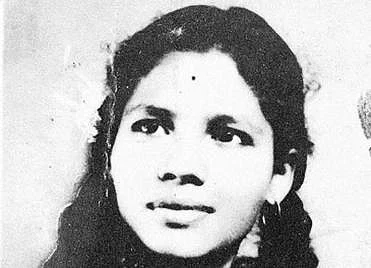On November 27, 1973, inside the dimly lit basement of Mumbai라이브 바카라 KEM Hospital, 25-year-old nurse Aruna Shanbaug was brutally attacked. Strangled with a dog chain and sexually assaulted by a hospital ward employee, Sohanlal Bhartha Valmiki, Shanbaug suffered severe brain stem and cervical cord injuries, leaving her in a persistent vegetative state (PVS) for the next 42 years.
In 2009, journalist and activist Pinky Virani filed a writ petition under Article 32 before the Supreme Court of India, seeking passive euthanasia for Shanbaug, arguing that she had effectively died on November 27, 1973. What followed was one of the most contentious legal battles in India라이브 바카라 medical ethics discourse. In 2011, the Supreme Court ruled on Virani라이브 바카라 petition, delivering a landmark judgment that legalized passive euthanasia in India—but denied it to Shanbaug. The decision, delivered with considerable legal nuance, delegated the final authority to the doctors who had cared for her for decades.
It was not the law that ultimately released Aruna, but time. In 2015, after developing pneumonia, she passed away at KEM Hospital, having been a silent witness to a decision that shifted the trajectory of medical ethics in India, forcing the nation to confront uncomfortable questions about life, death, and dignity. While her case did not bring her release, it paved the way for future legal reform, laying the groundwork for the Supreme Court라이브 바카라 2018 ruling that legalized passive euthanasia under strict safeguards.
In the end, Aruna라이브 바카라 voice was never heard—but her silence reshaped national policy and the conversation surrounding the right to die, consent, and autonomy.
The legal legacy of Aruna Shanbaug라이브 바카라 case is evident in Kerala and Karnataka implementing guidelines that allow terminally ill patients on life support to choose a dignified death. This policy offers hope to those whose suffering is deemed irreversible and unresponsive to medical treatment.
At the forefront of this movement is 85-year-old H.B. Karibasamma, who has been battling for the right to die with dignity for the past 24 years. Her fight is a testament to the persistent struggle for autonomy in a system that has long ignored the voices of the elderly, the poor, and women—especially those from marginalized communities.
While India라이브 바카라 legal journey surrounding euthanasia remains complex and cautious, examining international precedents offers valuable insight into how different countries have navigated the ethical minefield of medical assistance in dying.
Canada (Legalised Euthanasia Since 2016)
In Canada, Medical Assistance in Dying (MAiD) became legal in June 2016. The law was further expanded in March 2021 to include individuals with serious and incurable medical conditions whose death is not reasonably foreseeable.
Dr. Madaline Li, in a 2023 interview with the BBC, critiqued the policy, stating, “Making death too ready a solution disadvantages the most vulnerable people and lets society off the hook." Her comments underscore the concern that euthanasia while offering dignity in death, risks disincentivizing social reform for the ill, disabled, and marginalized.
Australia (Legalised Euthanasia in Various States Since 2019)
Euthanasia, or Voluntary Assisted Dying (VAD), is legally practiced in several Australian states, with strict eligibility criteria. A person must be an adult with full decision-making capacity, suffering from a fatal illness with a likely death within six months (or twelve months for neurodegenerative conditions).
The process involves multiple requests and medical assessments to ensure that the decision is voluntary and well-informed. However, despite these safeguards, the cost of euthanasia is not covered by most health insurance providers, leaving lower-income individuals—the most vulnerable—to face additional barriers.
Belgium (Legalised Euthanasia Since 2002)
Belgium라이브 바카라 2002 Euthanasia Act allows patients suffering from unbearable physical or mental suffering with no hope of recovery to request euthanasia. The request must be voluntary, well-considered, and repeated, with patients fully informed about their health condition and prospects.
In Belgium, there is no minimum age for euthanasia allowing even children to undergo the procedure
New Zealand (Legalised Euthanasia Since 2021)
New Zealand passed the End of Life Choice Act in 2019, allowing euthanasia for eligible individuals suffering from a terminal illness likely to result in death within six months.
Spain (Legalised Euthanasia Since 2021)
Spain legalized euthanasia on June 25, 2021, with the Organic Law for the Regulation of Euthanasia. This law decriminalizes medical assistance to die and sets eligibility criteria, including serious and incurable illnesses that cause unbearable suffering.
Netherlands (Legalised Euthanasia Since 2001)
The Netherlands established a well-defined legal framework for euthanasia in 2001 under the “Termination of Life on Request and Assisted Suicide (Review Procedure) Act.” The law allows euthanasia and physician-assisted suicide under the supervision of physicians.
As India continues to grapple with the ethical implications of euthanasia, legal precedents set by countries like Canada and Australia provide valuable case studies into the potential social benefits as well as the consequences of these policies. The evolving landscape of medical assistance in dying in India, shaped by the legacy of Aruna Shanbaug라이브 바카라 case and reflected in the landmark 2025 Karnataka ruling shows a growing movement towards facilities that allow death with dignity.














